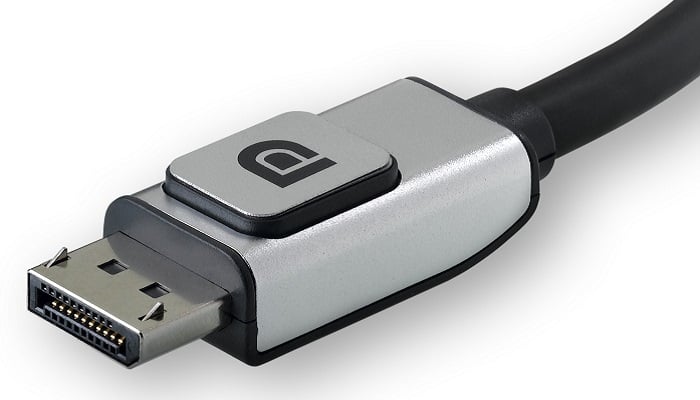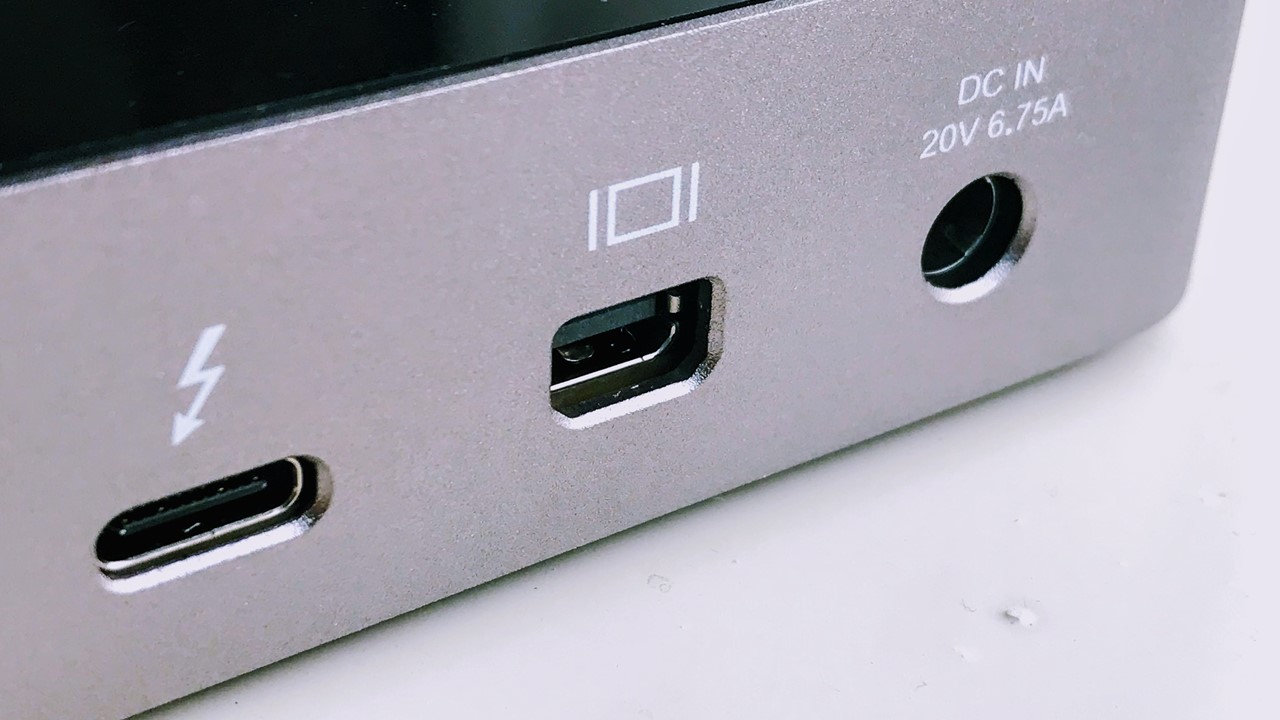In This Article
What is DisplayPort?
The DP or DisplayPort, just as the name suggests, transfers video signals from the source to the output device. In layman terms, a DP is a slot that will connect the monitor of a computer, or a TV or even a projector to display the images.
There are actually two varieties of it namely, a standard and a Mini DisplayPort. These ports usually have a much higher refresh rate than the HDMI or High-Definition Multimedia Interface.
KEY TAKEAWAYS
- A DisplayPort is a digital display interface that connects an external video source to the computer monitor.
- DP can carry both video and audio signals and data along with it via the bi-directional, half-duplex, auxiliary channel.
- This interface can be backward compatible with other interfaces with the use of either active or passive adapters.
- The unique aspect of DP is that it sends small data packets making it different from other legacy standards transmitting a clock signal with each output.
Understanding DisplayPort

DisplayPort or DP, as it is commonly known, is a digital display interface.
This was developed by a group of chip and PC manufacturers. It is then further standardized by VESA or the Video Electronics Standards Association.
It is mainly used to connect an external device, especially a video source to the display device, for example, a computer monitor.
Apart from carrying video signals, the DP can also carry audio signals, different forms of data, cables, and connectors or Universal Serial Bus.
Though the DP can send audio and video data and signals simultaneously, this is an optional feature, and one can be sent without the other, but in different forms and ways.
When it comes to sending the video signals, the path used can vary from six to sixteen bits for each color channel.
As for the audio signals, on the other hand, the path used can be up to eight channels with features like 24-bit and 192 kHz of uncompressed PCM audio.
The design of the DP consists of a half-duplex, bi-directional, auxiliary channel.
This carries device control signals and ensures management of data.
This data is used for the main link that comes in different standards, such as:
- MCCS or Monitor Control Command Set
- VESA EDID or Video Electronics Standards Association Extended Display Identification Data and
- DPMS or Display Power Management Signaling.
In addition to that, the DP interface is also designed to carry USB signals that are bi-directional in nature.
Ideally, the need to design a DP was to replace several things, such as:
- The VGA or Video Graphics Array
- The Front Panel Display or FPD Link and
- Digital Visual Interface or DVI.
The best thing about the design and interface of DP is that it is backward compatible with other interfaces.
These interfaces include HDMI. This is done by using either the active or passive adapters, both of which work in a different way.
The external passive adapter enables the compatibility mode of the DP. This helps in converting the signal from 3.3 to 5 volts.
The powered active adapter, on the other hand, is required for the compatibility with dual link and analog VGA or YPbPr DVI.
However, it does not rely on dual mode.
The active VGA adapters are driven directly by the DP connector but the active dual-link DVI adapters, on the other hand, characteristically depend on the external power source like the USB.
Fundamentals

DisplayPort is a digital display interface developed by the Video Electronics Standards Association (VESA) to provide high-quality audio and video connectivity between computers and display devices.
It was introduced in 2006 and has since become a popular choice for many computer manufacturers and users.
Here are some fundamental aspects of DisplayPort that you should know:
DisplayPort Versions
The current version of DisplayPort is DisplayPort 2.0, which was introduced in 2019.
This version offers significantly increased bandwidth, up to 80 Gbps, which enables support for higher resolutions, higher refresh rates, and improved color depth.
However, DisplayPort 1.4 is still the most widely used version in many devices.
Connector Types
DisplayPort uses two main types of connectors: standard DisplayPort and Mini DisplayPort.
Standard DisplayPort is the larger connector and is commonly found on desktop computers, while Mini DisplayPort is a smaller connector used on laptops, tablets, and other portable devices.
Maximum Resolution and Refresh Rates
DisplayPort supports a wide range of resolutions and refresh rates, depending on the version and the bandwidth available.
For example, DisplayPort 1.4 can support 4K displays at 120Hz or 8K displays at 60Hz.
DisplayPort 2.0 can support even higher resolutions and refresh rates.
Multi-Stream Transport (MST)
DisplayPort also supports MST, which allows multiple displays to be connected to a single DisplayPort output.
This feature is useful for setups that require multiple displays, such as video walls or gaming setups.
Audio Support
DisplayPort also supports high-quality audio, including 7.1 surround sound and Dolby Atmos.
This makes it a great choice for multimedia applications such as gaming, video editing, and streaming.
Compatibility
DisplayPort is compatible with a wide range of devices, including monitors, TVs, projectors, and virtual reality headsets.
It is also compatible with other display interfaces such as HDMI and VGA through the use of adapters.
Reasons to Use DisplayPort
- Higher bandwidth and faster data transfer rates than other display interfaces.
- Supports higher resolutions and refresh rates for a smoother, clearer image.
- Multi-Stream Transport (MST) allows for multiple displays to be connected to a single output.
- Audio support for high-quality sound, including surround sound and Dolby Atmos.
- Compatible with a wide range of devices and display interfaces through the use of adapters.
- Can transmit power to the connected device, reducing the need for extra cables and power sources.
- Provides a secure, encrypted connection for data protection and privacy.
- Designed with gaming and multimedia applications in mind, with features such as Adaptive-Sync and HDR support.
- Provides a more flexible and customizable display experience with features like daisy-chaining and DisplayPort Alternate Mode (DP Alt Mode) for USB-C.
Conclusion
With the evolving technologies, the DisplayPort will soon become the most effective alternative to HDMI.
Its ability to support high resolution of high-end displays along with its feature support provides just the kind of bandwidth required to ensure this.
It is certain to take over some of the more mainstream technologies and become a mandatory feature and display standard pretty soon.